 |
 |
 |
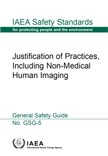 |
Justificación de las Prácticas, Incluida la Imagenología Humana con Fines no Médicos
OIEA, Guía de Seguridad General, 2018, 65 p.
El objetivo de la presente Guía de Seguridad es proporcionar orientación a los gobiernos y los órganos reguladores sobre el enfoque que debe adoptarse al considerar si la implantación de un tipo de práctica concreto en una situación de exposición planificada está justificada. Está pensada para ayudarlos en su proceso de adopción de decisiones cuando se enfrenten a la necesidad o a una solicitud de autorizar un tipo nuevo de práctica, o a la necesidad de revisar un tipo de práctica ya establecido.
|
Guía de Seguridad proporciona también
algo de orientación a quienes deseen demostrar al gobierno o al órgano regulador que un tipo de práctica concreto está justificado. Complementa la orientación proporcionada en la Guía de Seguridad del OIEA sobre el control reglamentario de las fuentes de radiación.
|
 |
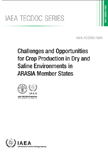 |
Challenges and Opportunities for Crop Production in Dry and Saline Environments in ARASIA Member States
IAEA TECDOC, 2018, 136 p.
This publication serves as a referencing guide for Member States and interested specialized readers wishing to work on agriculture in dry and saline environment, in particular located in the Middle East region. All information and instructions given in this guide are based on successful and sound practices applied in pertaining Member States for sustainable cropping of salt affected soils.
|
It will help scientists and farmers to select management alternatives most efficient for agriculture in saline environments within their own countries. The publication also focuses on the possible use of isotopes techniques in dealing with salinity and droughts conditions affecting crop production.
|
 |
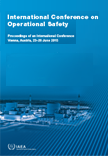 |
International Conference on Operational Safety - Proceedings of an International Conference Held in Vienna, Austria, 23–26 June 2015
Proceedings series (International Atomic Energy Agency. CD-ROM) , 2018, s. p.
This proceedings publication presents the essential content of the 2015 IAEA international conference on the operational safety of nuclear power plants. Although conferences on this topic are conducted regularly, this was the first one after the earthquake in 2011 that caused the accident at the Fukushima-Daiichi nuclear power plant.
|
The conference brought together a broad range of participants including nuclear utilities, regulators, governments and academia. The topics covered operational safety, culture for safety, effective use of operating experience and the safety of long term operations, amongst others. A fresh perspective was added by representatives of other industries that deal with significant potential hazards. This publication, available exclusively in digital format, provides the reader with the opening and closing addresses, summaries of all sessions and the majority of the papers and posters accepted for the conference.
|
 |
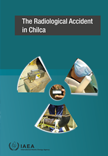 |
The Radiological Accident in Chilca
IAEA Non-serial Publications , 2018, 113 p.
Under the Convention on Assistance in the Case of a Nuclear or Radiological Emergency, the Peruvian authorities requested assistance from the IAEA in relation to the radiological accident that occurred during non-destructive testing using a nuclear radioactive source in the district of Chilca, Peru, in 2012. This assistance related to dose assessment and medical management of those involved in the accident was provided during 2012 and 2013. |
The report gives a detailed account and analysis of the event, as well as, the actions taken in order to assist organizations responsible for radiation protection, source safety and emergency preparedness and response in identifying lessons to be learned that may help to prevent similar accidents.
|
 |
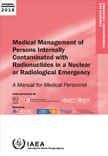 |
Medical Management of Persons Internally Contaminated with Radionuclides in a Nuclear or Radiological Emergency - A Manual for Medical Personnel
IAEA Emergency Preparedness and Response, 2018, 116 p.
This manual focuses on the medical management of internal contamination with radionuclides. Its primary objective is to provide practical information, to be used for treatment decisions by medical personnel during a radiation emergency. It seeks to present this information in a clear and straightforward way that can be easily understood and followed even by someone who does not have any background knowledge or experience in this specific area. |
It may also be used by policy makers and health authorities in charge of planning the general as well as the medical response to radiation emergencies.
Guidance provided here, describing good practices, represents expert opinion but does not constitute recommendations made on the basis of a consensus of Member States.
|
 |
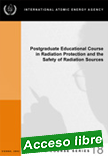 |
Postgraduate Educational Course in Radiation Protection and the Safety of Radiation Sources
IAEA - English, published: 25/03/19
The objective of the IAEA PGEC is to provide foundation training in radiation protection and the safety of radiation sources. It is designed to provide both theoretical and practical training in the multidisciplinary scientific and/or technical bases of international recommendations and standards on radiation protection and their implementation. The standard syllabus provides a harmonized basis for running the PGEC in terms of the theoretical contents of lectures and practical exercises including learning objectives;
|
the minimum facilities and infrastructure of the training facility; and the selection of trainers and students.
|
 |
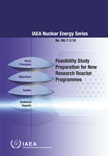 |
Feasibility Study Preparation for New Research Reactor Programmes
IAEA Nuclear Energy Series, 2018, 33 p.
This publication describes the various elements to be included in a comprehensive, robust and logically structured feasibility study report for a new research reactor project. It provides guidance for the main supporting organization or team of a new research reactor to enable them to undertake an authoritative and comprehensive feasibility study that could be submitted to decision makers for their review in order to support proposals and endorse an action plan for construction of such a facility. |
It includes considerations of justification for a new research reactor, associated key nuclear infrastructure issues, cost-benefit analysis and risk management that would have to be addressed prior to authorizations for the establishment of a new research reactor. Addressing these issues will help Member States to develop a comprehensive understanding of all the roles, obligations and commitments involved in establishing and operating a research reactor and ensure that these are met during all phases of the project life cycle. The publication also includes a generic template for preparing a feasibility study report and provides some examples and lessons learned from individual Member States in preparing such studies.
|
 |
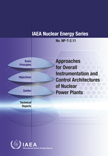 |
Approaches for Overall Instrumentation and Control Architectures of Nuclear Power Plants
IAEA Nuclear Energy Series, 2018, 55 p.
This publication concerns approaches for establishing the overall instrumentation and control (I&C) architecture of a nuclear power plant. It describes the characteristics and content of general I&C architectures, presents architectural principles and addresses the limitation of the potential effects of postulated common cause failures. It introduces an architectural development process and discusses technical considerations for the design.
|
The publication emphasizes safety aspects, addresses the defence in depth concept, but also includes consideration of plant availability, operability and security. It recognizes the potential for adverse effects of I&C failures on plant availability and operability that may arise from increased architectural complexity, and also describes the optimization of I&C functionality and features that are required to be implemented.
|
 |
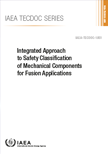 |
Integrated Approach to Safety Classification of Mechanical Components for Fusion Applicationss
IAEA TECDOC, 2018, 130 p.
This TECDOC is the first publication on safety classification of components for fusion applications. It highlights the existing differences between fission and fusion reactors in identification and classification of structures, systems and components that are important to safety and offers guidance for fusion applications. The publication also provides guidance on inclusion of the new design extension conditions, which have been added after the review of IAEA Safety Guides following the Fukushima Daiichi NPP accident.
|
|
 |
 |
Storing Spent Fuel until Transport to Reprocessing or Disposal
IAEA - No. NF-T-3.3, published: 19/03/19
This publication identifies issues and challenges relevant to the development and implementation of options, policies, strategies and programmes for ensuring safe, secure, and effective storage of spent fuel until transport for reprocessing or disposal. The target audience of this publication includes policy and decision makers who need to be aware of the implicit risks and costs associated with decision timing for determining and implementing an end point for spent fuel management (such as reprocessing or disposal) to ensure the responsible and sustainable use of nuclear energy.
|
The publication will assist those within the nuclear industry in communicating the importance of a clear, credible and sustainable spent fuel management strategy and will encourage decision makers to consider different approaches that may be useful in addressing the uncertainties resulting from an unknown storage duration and an undefined end point for spent fuel management.
|
 |
| |
|
|

|
|
|
| |
|
|
| |
| |
|
|
| |
| |
|
|
| |
| |
|
|
|
